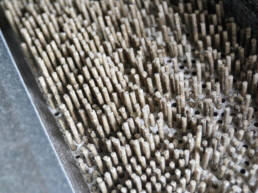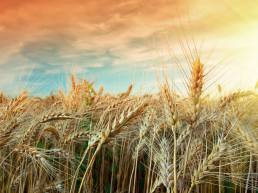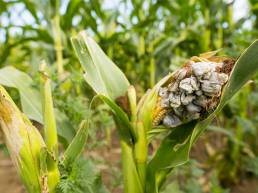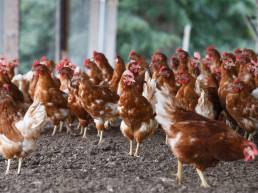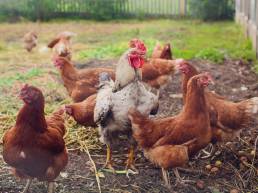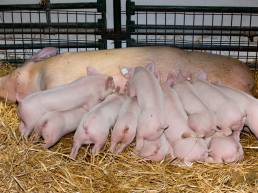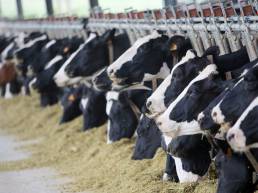In June, all crops were looking very good, with very positive reports being received from countries including France. The Black Sea region also predicted a good harvest, with a record harvest already being mentioned in June. In August, reports issued by the AMI (Agrarmarkt Informations Gesellschaft/DRV) stated that harvests of all cereal crops were reaching the long-term average, although the figure is just a few per cent higher than the 2020 harvest. However, the harvest still turned out to be poor in France. This has increased the demand for grain in that country to enable France to continue serving its export market (e.g. Algeria). This development is driving wheat prices for the September contracts in Europe up to sums of €250/t. Drought and heat in the USA are impacting on prices on the grain stock markets. The total rapeseed crop increased by 4% compared with 2020 with varying yields per region and is still 8% lower in comparison with the long-term average. The market value of soybean meal is also buoyant noting prices in excess of €335/t for September to December.
Quality is an important criterion
Wet and warm weather conditions characterised the summer of 2021. Some regions experienced exceptionally high rainfall when the grain crop was flowering, which can increase the risk of fusarium infections and the associated mycotoxin load. The wet and warm weather delayed the harvest in August. This may lead to a greater risk of the presence of mycotoxins in grain/crops. Mycotoxin contamination of grain and feed can negatively affect animal health and fertility. To limit the adverse effects and influence of mycotoxins on animals, E.F.S. offers a mycotoxin deactivator Tox-Aid®.
You may also like
Tox-Aid® study
September 7, 2021
E.F.S. recently had an in vitro study performed using the mycotoxin deactivator Tox-Aid® which was developed by E.F.S. This study measured the deactivation capacity of Tox-Aid® and three other, renowned mycotoxin…
Heat stability of Tox-Aid®
April 6, 2021
E.F.S. is always evolving! As a result, we’re constantly on the lookout for innovative knowledge about our products. In this context, we studied the heat stability of Tox-Aid®, our mycotoxin deactivating product. A…
Grain harvest 2020
September 7, 2020
Following a good start at the end of July the harvest season is still in full swing. After a dry spring and a changeable start of the summer (followed by an extreme heatwave) harvest prognoses were positive.
Tox-Aid® organic authorisation
June 29, 2020
Tox-Aid® is on the organic input list! Tox-Aid® has been authorised for use in organic feeds to limit the negative effects of mycotoxins in the animal. This product has a three-stage effect, i.e. deactivation by means…
Corn smut in maize silage and its threat to animal health
August 26, 2018
At the moment a lot of corn smut (field fungus) is found in maize fields as a result of prolonged drought, sometimes combined with sprinkler irrigation this growing season (2018).
Tox-Aid®: The deactivation of Enniatin B
September 15, 2017
In line with our motto ‘inspired by nature, scientifically proven’ mycotoxin Enniatin B1 has been analysed by means of in vitro tests. Enniatins are a group of mycotoxins that is relatively unknown, but increasingly…
Tox-Aid®: Also deactivates Fumonisin and Ochratoxin
May 20, 2017
Tox-aid® is a natural solution that deactivates mycotoxins. In three steps mycotoxins in the animal are rendered harmless. E.F.S. believes nature has a solution for everything. However, this also needs to be…
Tox-Aid®: Masked Mycotoxins
January 28, 2017
E.F.S. believes that nature has a solution for everything. Mycotoxins are part of a natural process and it appears that masked mycotoxins are present in crops, feed materials and feed. Maybe you have already heard the…
Mycotoxins
August 16, 2016
Nowadays, adequately controlling the growth of bacteria and fungi is possible, but mycotoxins still pose a risk due to their impact on animal health. In practice, mycotoxins still often seem to be forgotten. However,…
Tox-Aid®: Mycotoxins in dairy farming
July 23, 2016
Mycotoxins are an underestimated problem in livestock. More knowledge has been gained in the past few decades about fungi, mycotoxins and their effects. Therefore fungi are more and more recognised as a problem at…





